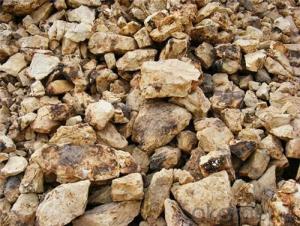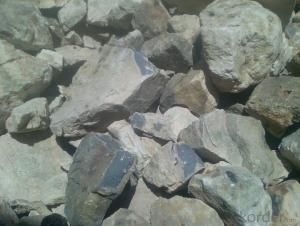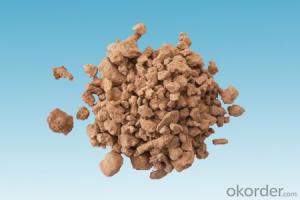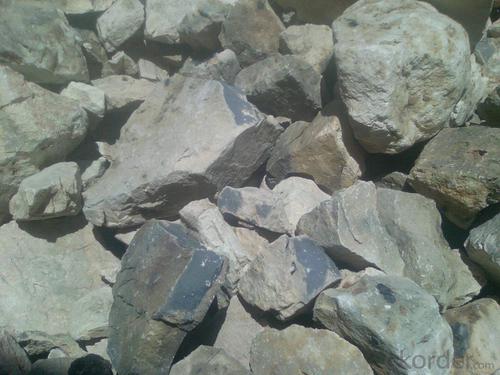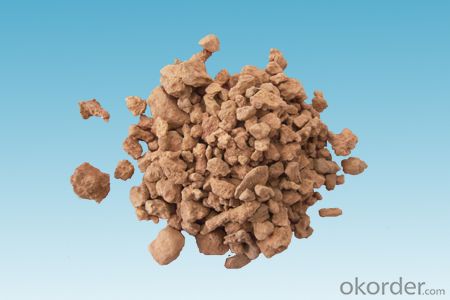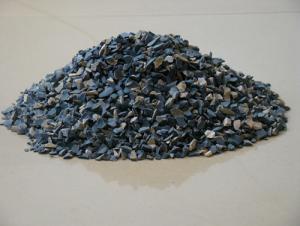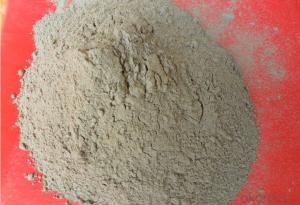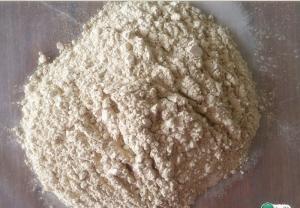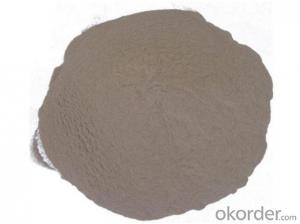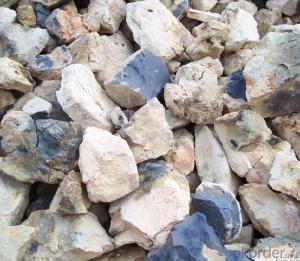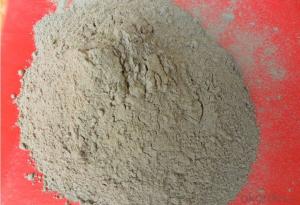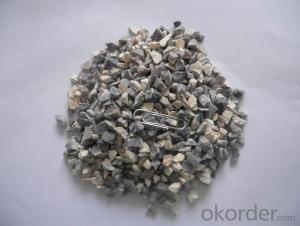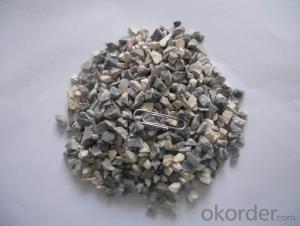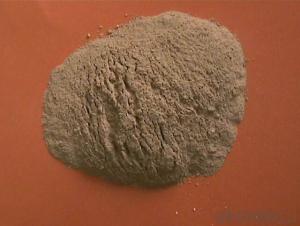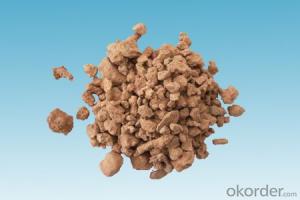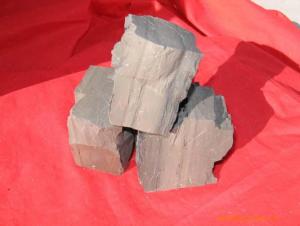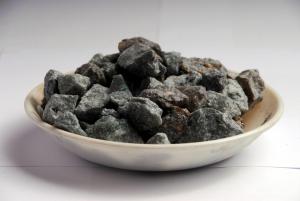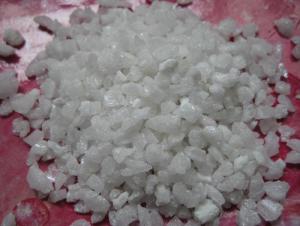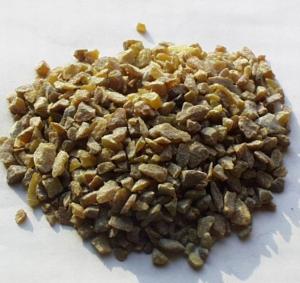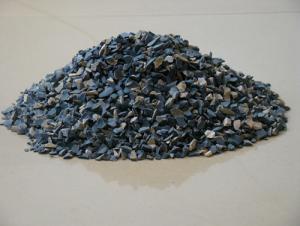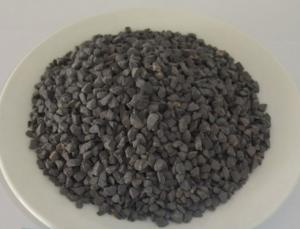Raw Materials for Refractory:High Temperature Calcined Bauxite / Furnace Bauxite by CNBM China
- Loading Port:
- Tianjin
- Payment Terms:
- TT OR LC
- Min Order Qty:
- 11 m.t.
- Supply Capability:
- 10000000 m.t./month
OKorder Service Pledge
OKorder Financial Service
You Might Also Like
1.Structure of Calcined Bauxite Description
Bauxite (aluminous soil; Bauxite) is also called the alumina or bauxite, main ingredients are alumina, hydrated alumina containing impurities, is an earthy mineral. White or gray, brown and yellow or light red by iron. From 4 to 3.9 g/cm3 density, hardness, 1 ~ 3 is not transparent, very brittle. Very difficult to melt. Insoluble in water, soluble in sulfuric acid, sodium hydroxide solution. Mainly used for aluminium, refractory material.
2.Main Features of the Calcined Bauxite
Calcined bauxite is one of the principal ore of aluminum. Calcined bauxite contains hydrous aluminum oxides and aluminum
hydroxides, formed through the laterization of aluminous rocks in tropical and subtropical areas .Calcined bauxite is obtained by calcining (heating)superior grade bauxite at high temperature (from 85OC to 1600C) .This removes moisture there. By increasing the alumina content,compared to an alumina content of about 57%to 58% in raw bauxite, calcined bauxite has an alumina content of 84%to88%.The heating is carried out in rotary kilns.
3.Main usage of the Calcined Bauxite
(1) aluminium industry. Used in national defense, aerospace, automotive, electronics, chemical industry, daily necessities, etc.
(2) precision casting. Alumina clinker made after the mould precision casting processed into fine powder. Used in military industry, aerospace, communications, instrumentation, machinery and medical equipment department.
(3) is used for refractory products. High bauxite clinker refractoriness is as high as 1780, chemical stability strong, and good physical properties.
(4) aluminum silicate refractory fiber. With light weight, high temperature resistance, good thermal stability, low thermal conductivity, heat capacity is small and the advantages of resistance to mechanical shock. Used in iron and steel, nonferrous metallurgy, electronics, petroleum, chemical, aerospace, atomic energy, defense and other industries.
(5) in magnesia and bauxite clinker as raw materials, add the appropriate binder, used for pouring ladle whole ladle lining has particularly good effects.
(6) manufacture alumina cement, abrasive materials, ceramic industry and chemical industry can be aluminum of various compound.
4. Calcined Bauxite Images
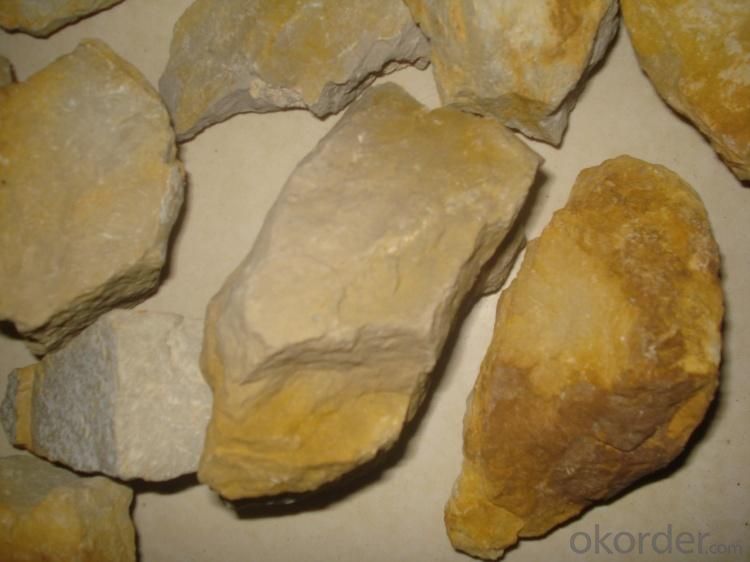
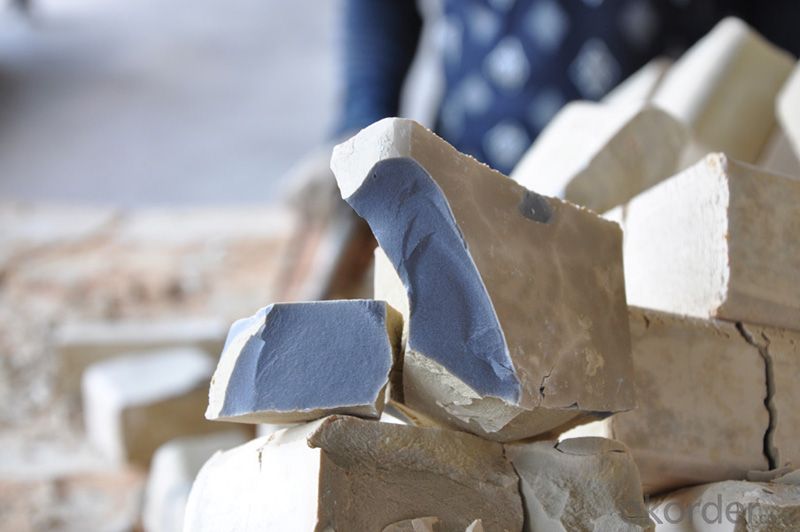
5. Calcined Bauxite Specification
1.)furnace bauxite price
2.)working temperature:1500-1700degree
3.)furnace coke brick
4.)ISO9001
6.FAQ of Calcined Bauxite
1). Q: Are you a factory or trading company?
A: We are a factory.
2). Q: Where is your factory located? How can I visit there?
A: Our factory is located in ShanXi, HeNan, China. You are warmly welcomed to visit us!
3). Q: How can I get some samples?
A: Please connect me for samples
4). Q: Can the price be cheaper?
A: Of course, you will be offered a good discount for big amount.
- Q: What is the role of adding chromium oxide green in unshaped refractory materials
- Generally, less is added in corundum or corundum spinel refractory material, but it can significantly improve the material performance such as high temperature strength, erosion resistance, thermal and shock stability, etc.
- Q: Can anyone tell me the requirements of the refractory masonry??
- Kaolin is mainly composed of kaolinite crowded minerals that is in the shpe of tiny flake which is less than two microns, tube and folding flake. The kaolinite crowded mineral consists of kaolinite, dickite, pearl stone, halloysite, etc. and its ideal chemical formula is AL2O3-2SiO2-2H2O. The main mineral component of it is kaolinite and halloysite.In addition to the kaolinite crowded mineral, kaolin is accompanied by other minerals like montmorillonite, illite, pyrophyllite, quartz and feldspar. The chemical composition of kaolin contains large amounts of AL2O3, SiO2, and a small amount of Fe2O3, TiO2, and traces of K2O, Na2O, CaO and MgO, etc. The white pottery is made of kaolin. At present, the internationally accepted scientific name for kaolin is Kaolin which is derived from the kaolin mountain in the eastern suburb of kaolin village in Jingdezhen.Such special properties of kaolin as its plasticity,cohesiveness, certain dry strength, sinterability and firing whiteness make it the main raw material for ceramic production; properties like whiteness, softness, high dispersibility, and adsorbability allows it to be widely used the paper industry. In addition, the kaolin is also widely used in some industrial sectors such as rubber, plastics, refractories, oil refining as well as agriculture sector and cutting-edge technology for national defense. According to the purpose and requirements, kaolin can be processed and purified and it can be used to manufacture activated clay.
- Q: Development trend of refractories
- Mullite Matrix clinker. There are higher requirements of kaolin and refractory annded life, it should be able to grind medical industrial raw materials alumina, vacuum extrusion molding, high temperature roasting and smelting from unshaped refractory material a good thermal mechanical properties in the kiln and has good application prospect; 2, Dong Qingshi clinker. With kaolin and magnesia as raw materials, wet grinding, vacuum extrusion, and then high temperature calcination, furniture has a very good prospect; 3, magnesium calcium sand. Because of the development of clean steel, low carbon steel, high oxygen steel and stainless steel, the basic importance of free calcium oxide refractories is supported; 4, fused eutectic composite. Bauxite based fused corundum, bauxite based fused mullite, bauxite based fused mullite zirconia, fused corundum zirconia fused zirconia, Magnesium Oxide and other materials have been developing rapidly; 5, high density spherical hollow mullite aggregate. The wall thickness of the shell of the 0.2 - 1.5 - 5 mm, diameter 40 mm, smooth surface, can not be uniform, spherical shell, this may be a double, a prominent part of the surface can be dense, can also be used for hollow casting material, not only can improve the insulation performance of the material, in order to reduce the volume density. Instead of destroying its strength.
- Q: About the market issues of thermal insulation material and refractory material.
- In fact, the thermal insulation material produced by the Sichuan-Benniao Hing construction company is very good, you can get the company's information just by inputing the Sichuan-Benniao Hing construction company into Baidu
- Q: which kind of refractory is used in golden smelting furnace? How about his using temperature
- generally the price of the quartz sand refractory material is higher and the temperature can meet the requirement of 2000 degree.
- Q: Why do magnesium oxide refractory bricks can be made into refractories?
- The substance used in refractories must have the following characteristics and properties: 1, High stability: Anti-oxidation, anti-reduction and thermal decomposition; 2, High melting point of 2800 degree; 3, Low price. The magnesium oxide refractories have all these three characteristics and properties, particularlly in the aspects of melting point and stability .
- Q: what is the common materials for home fireproofing material?
- 1, lumber core 2,decoration panel 3 , plywood 4 density board 5,chipboard 6 fireproof?panel, 7.gypsum board Hope to adopt my opinion
- Q: What are the main characteristics of the sic refractories?
- The physical properties of SiC refractories include structural properties, thermal properties, mechanical properties, usability and job performance. The structural properties of refractory include porosity, bulk density, water absorption, air permeability, an the distribution of pore size. The thermal properties of refractory include thermal conductivity, thermal expansion coefficient, specific heat, heat capacity, thermal diffusivity, and thermal emission rate. The mechanical properties of refractories include withstand voltage strength, tensile strength, anti bending strength, torsional strength, shear strength, impact strength, abrasion resistance, creep resistance, adhesive strength, and elasticity modulus. The usability of refractories include refractoriness, load softening temperature, linear?change?on?reheating, thermal shock resistant performance, slag resistance, acid resistance, alkali resistance, hydration resistance, corrosion resistance to CO, conductivity, and inoxidizability.
- Q: What 's the highest temperature can magnesium plate glass resist ?
- You only need a fire-resisitance board thicker than 10 mm, remember to add more perlite as filler during production, 12 mm board is 80 yuan. . . .
- Q: Which refractory is better for building 1500 degree kiln ?
- The top and wall use alumina hollow ball brick. If it is cubic kiln, the kiln bottom should use heavy corundum brick. If it is continuous kiln, burning zone should use alumina hollow ball brick, burning zone seal and kiln car face brick. If it is pit furnace, curved seal should use heavy corundum brick, and furnace wall and top should use alumina hollow ball brick. That depends on what kind of kiln it is. Curved seal and kiln car should use heavy corundum brick. You can add me friends to have further talks.
Send your message to us
Raw Materials for Refractory:High Temperature Calcined Bauxite / Furnace Bauxite by CNBM China
- Loading Port:
- Tianjin
- Payment Terms:
- TT OR LC
- Min Order Qty:
- 11 m.t.
- Supply Capability:
- 10000000 m.t./month
OKorder Service Pledge
OKorder Financial Service
Similar products
Hot products
Hot Searches
Related keywords
